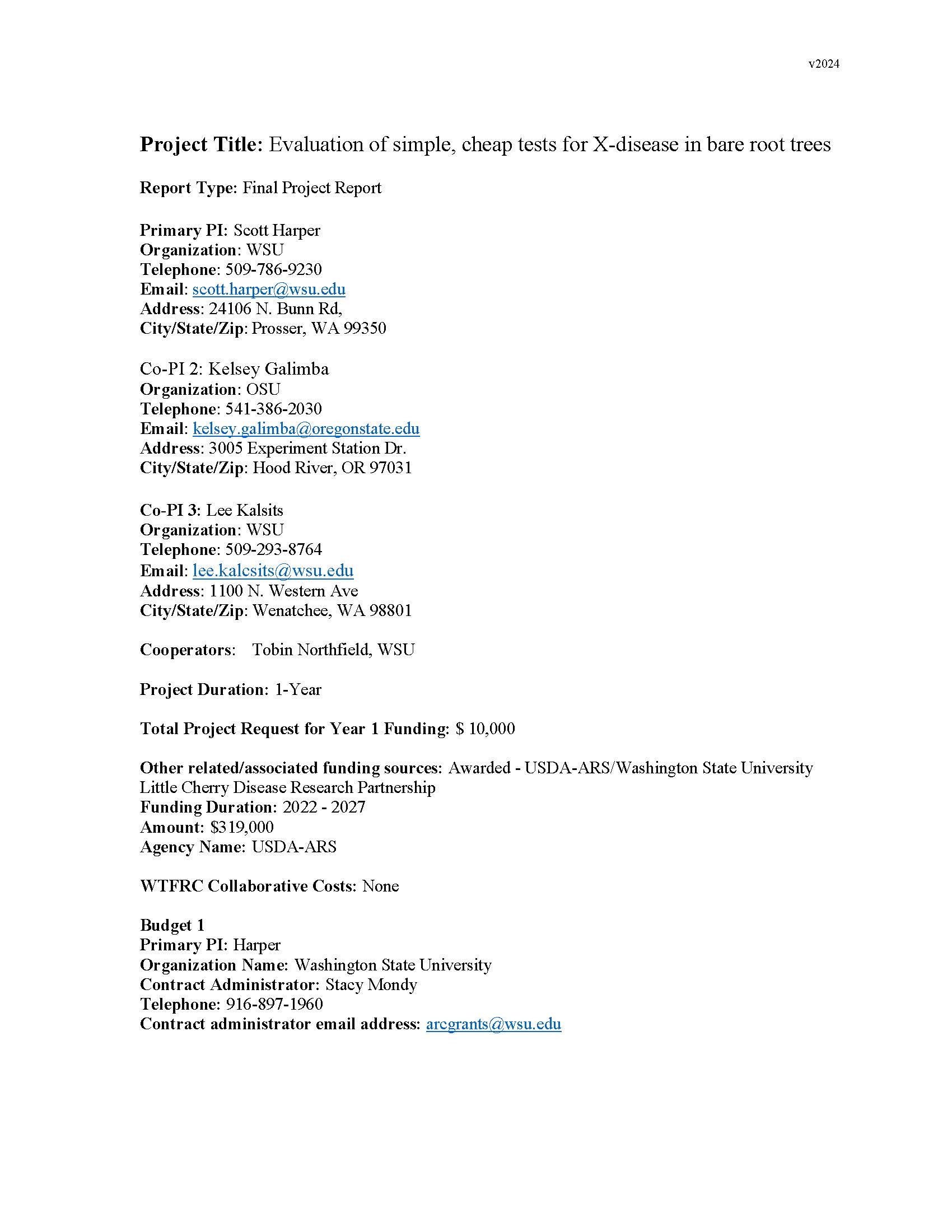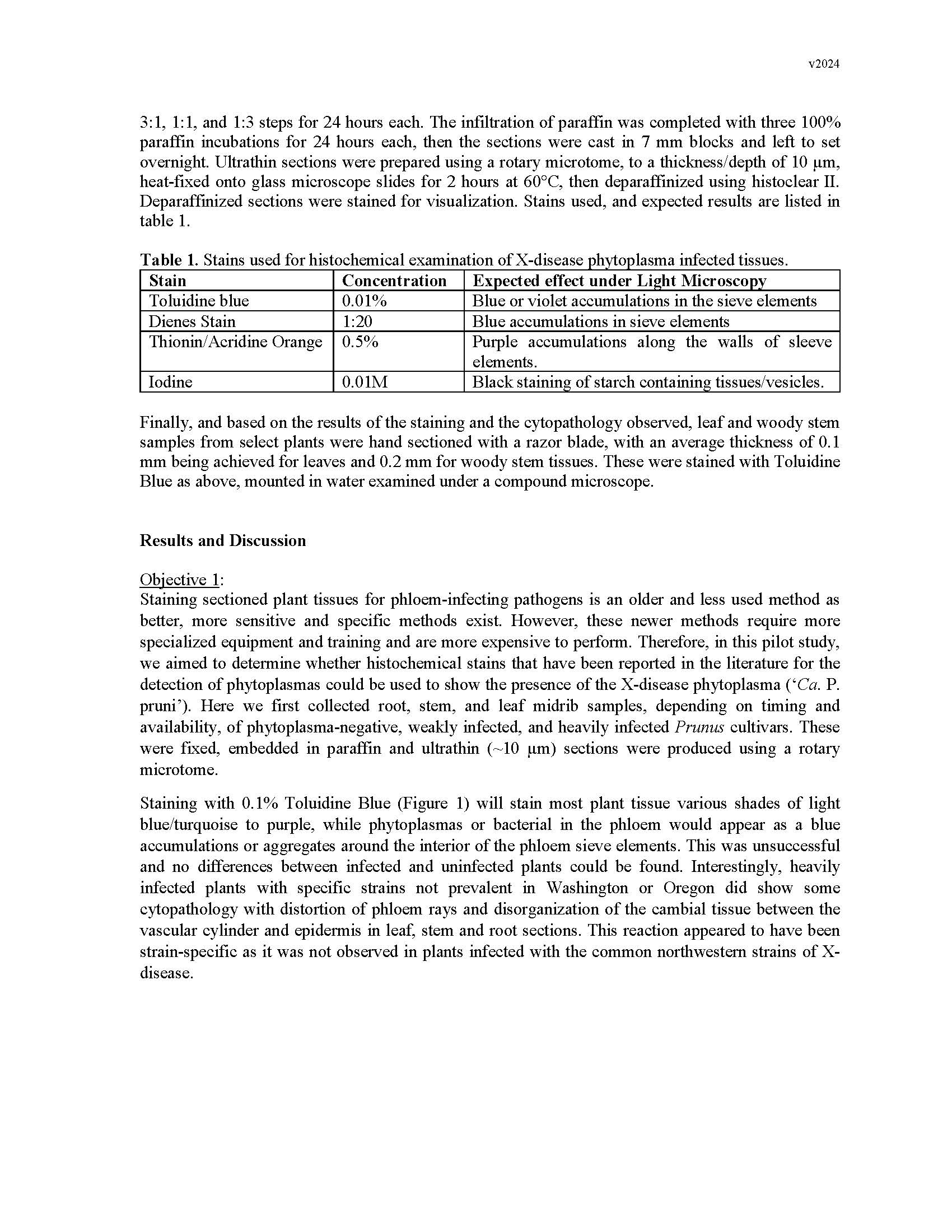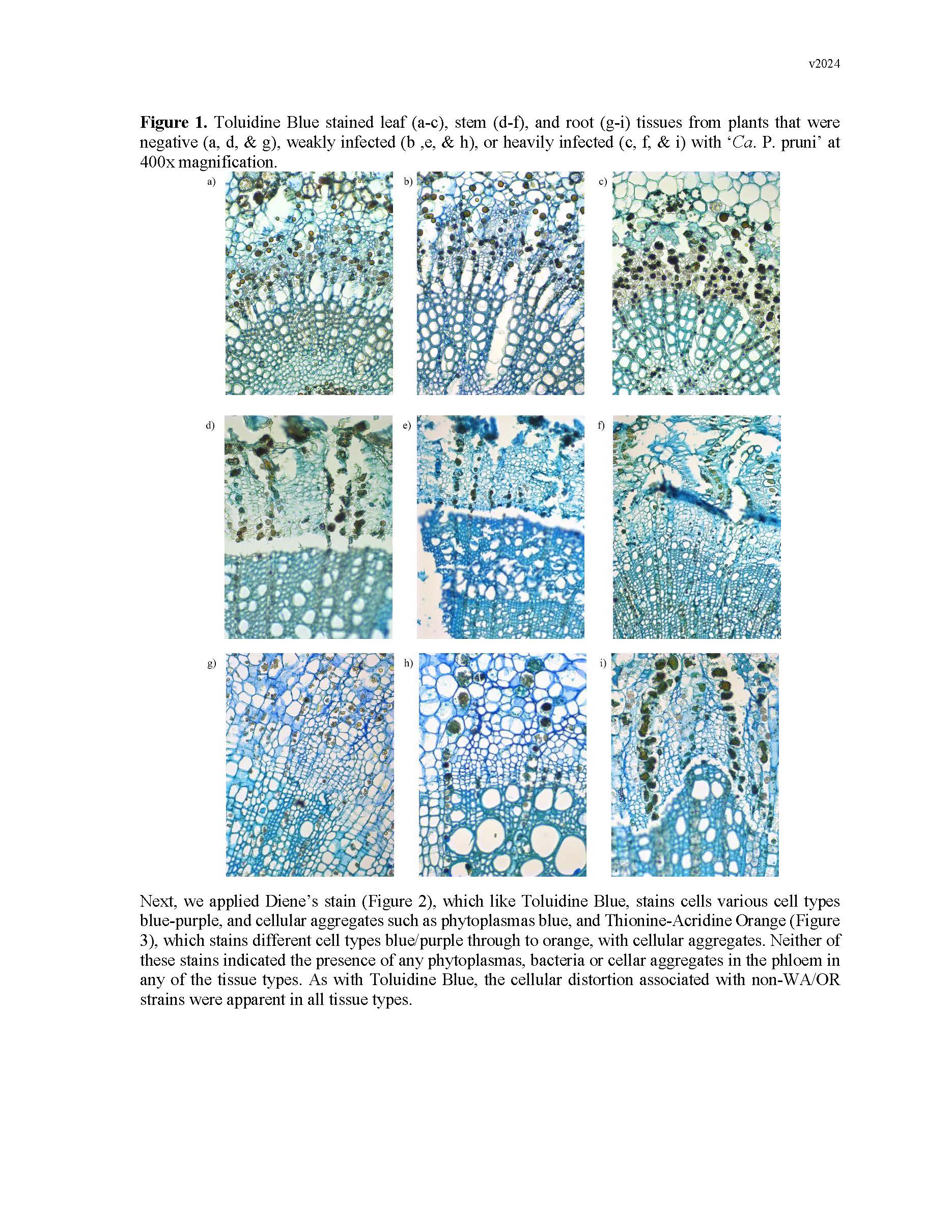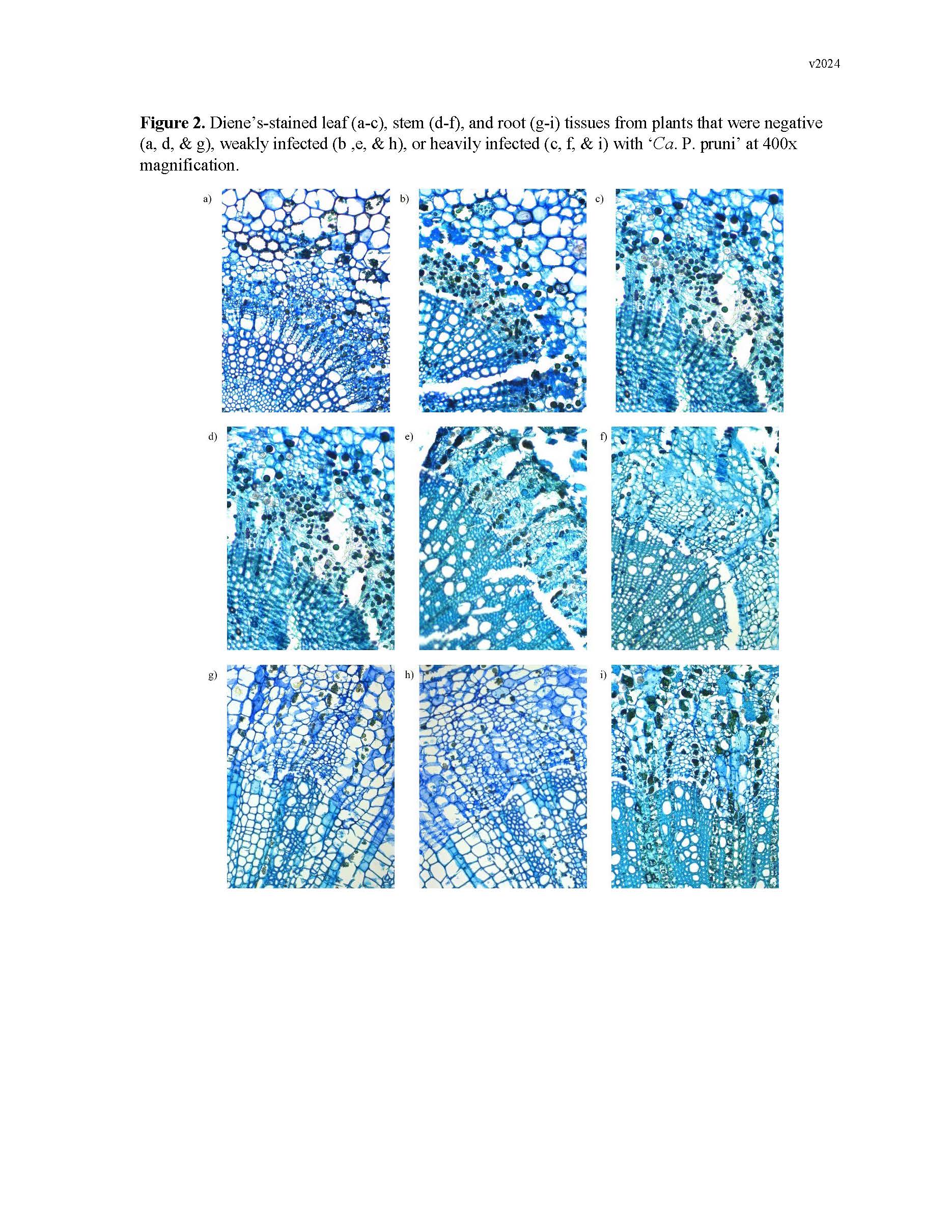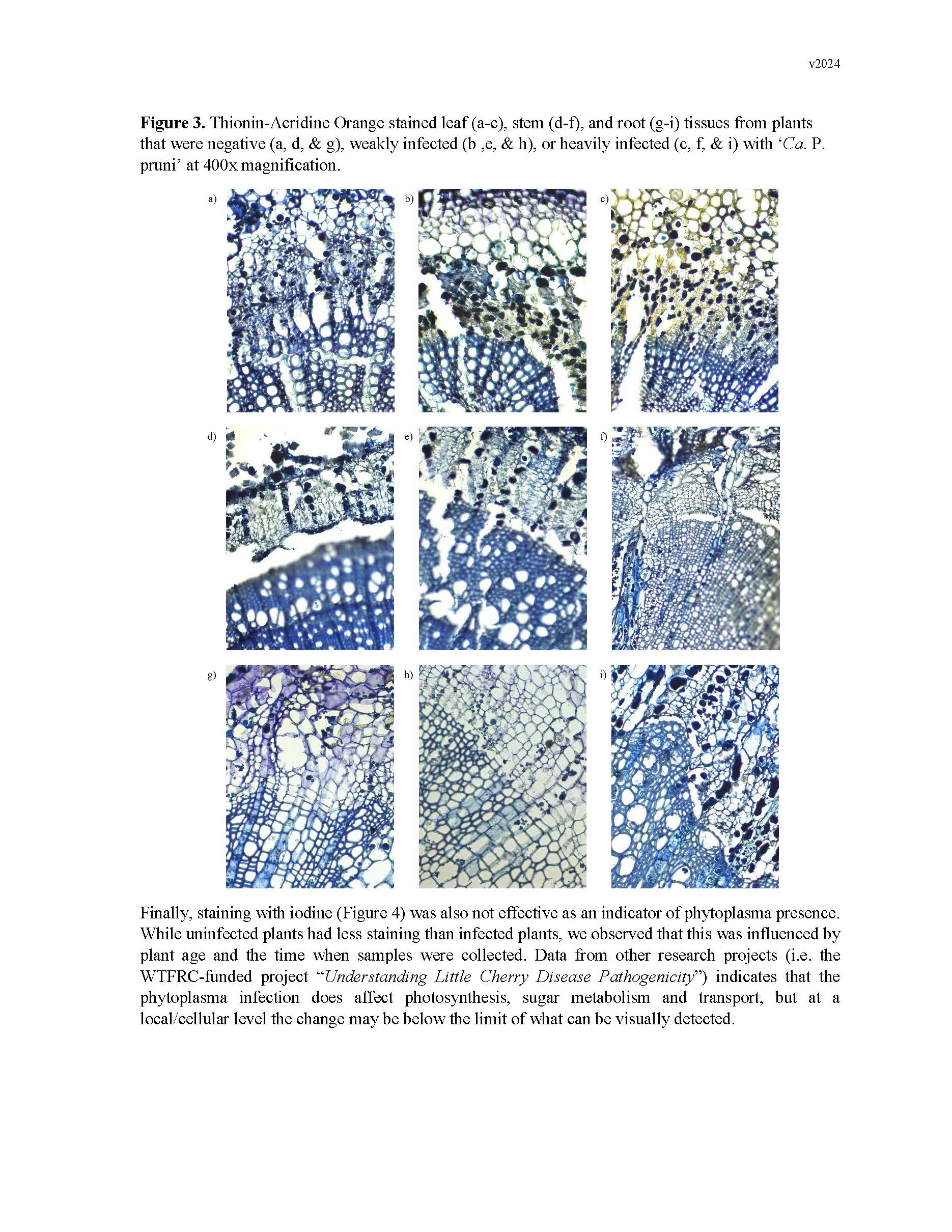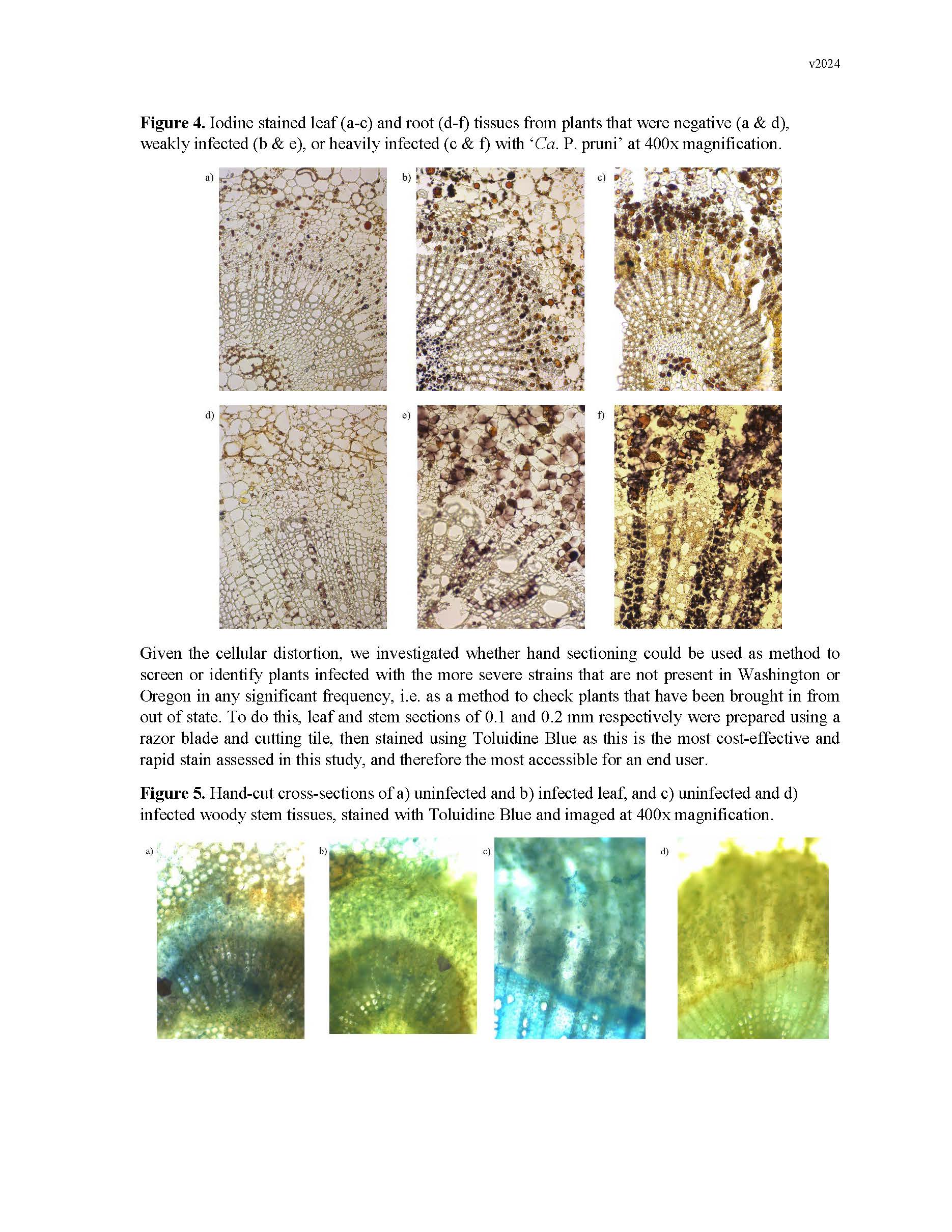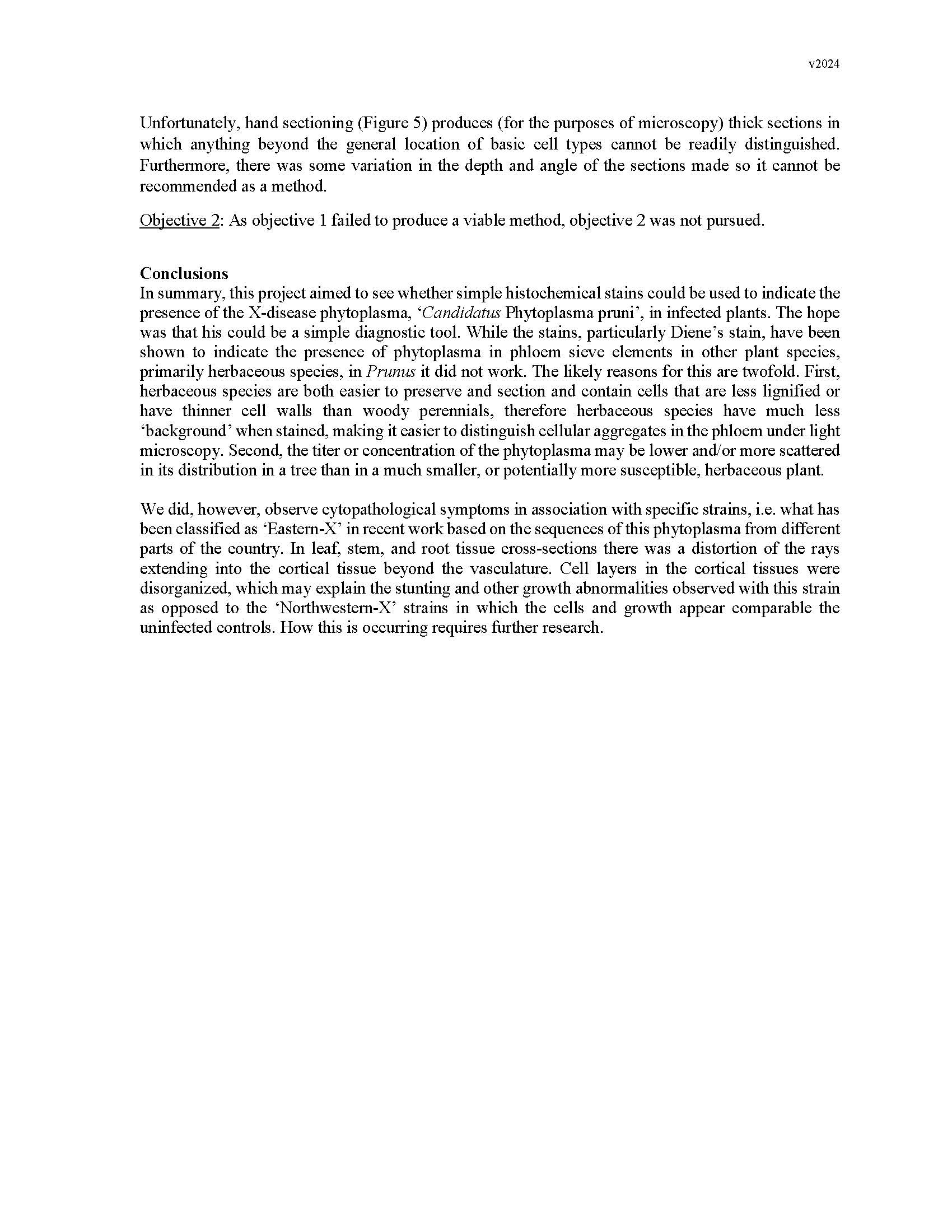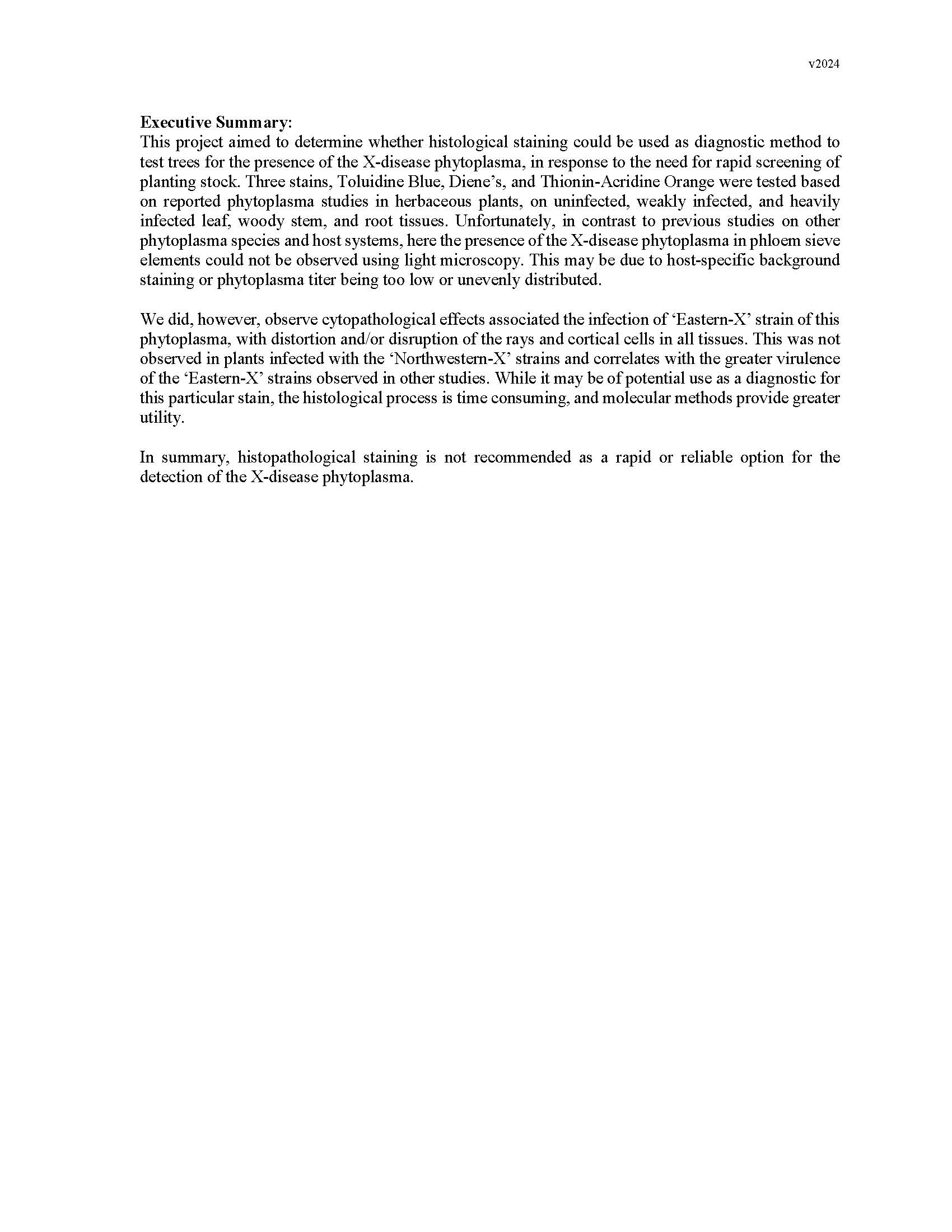Evaluation of simple, cheap tests for X-disease in bare root trees
Author: Scott Harper
Published: 2025
Summary: This project aimed to determine whether histological staining could be used as diagnostic method to test trees for the presence of the X-disease phytoplasma, in response to the need for rapid screening of planting stock. Three stains, Toluidine Blue, Diene’s, and Thionin-Acridine Orange were tested based on reported phytoplasma studies in herbaceous plants, on uninfected, weakly infected, and heavily infected leaf, woody stem, and root tissues. Unfortunately, in contrast to previous studies on other phytoplasma species and host systems, here the presence of the X-disease phytoplasma in phloem sieve elements could not be observed using light microscopy. This may be due to host-specific background staining or phytoplasma titer being too low or unevenly distributed. We did, however, observe cytopathological effects associated the infection of ‘Eastern-X’ strain of this phytoplasma, with distortion and/or disruption of the rays and cortical cells in all tissues. This was not observed in plants infected with the ‘Northwestern-X’ strains and correlates with the greater virulence of the ‘Eastern-X’ strains observed in other studies. While it may be of potential use as a diagnostic for this particular stain, the histological process is time consuming, and molecular methods provide greater utility. In summary, histopathological staining is not recommended as a rapid or reliable option for the detection of the X-disease phytoplasma.
Keywords:

